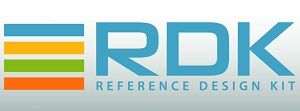Developers Tout Speed of Comcast's RDK

Washington – Based on the tangible evidence presented here at The Cable Show this week, the developer community is starting to rally around the Comcast-founded Reference Design Kit (RDK) for IP-capable set-tops and gateways.
The RDK has a coming out party of sorts at last year’s annual cable confab, though most of the discussion was limited to desired goals and slideware. This year, the focus was on showing off tangible set-top products and apps developed to run on the pre-integrated software stack. A condensed version of those efforts was presented Wednesday at an Imagine Park session near the tail end of the show that featured a handful of suppliers trotting out latest RDK-capable wares.
One of the key goals of RDK is speed – the ability to accelerate how long it takes to develop new devices and apps. “Service velocity is the phrase we use…to make the whole ecosystem move faster and faster,” Steve Reynolds, Comcast’s SVP of CPE and home network, said. He estimated that more than 85 companies are now part of the “RDK community” of silicon and set-top makers, software developers and integration firms.
“This is your RDK,” said Comcast SVP Mark Hess said to show-goers. “We’re working hard making this into a community.”
A key part of the ecosystem is the box. With the RDK, the process of going from step one to the delivery of a sample unit has been cut from one to two months to a matter of days, said Robert McNabb, a member of the senior technical staff at Humax, one of the vendors that’s making the Xi3, a new IP-only HD client that is based on the RDK that will enter play as Comcast’s rolls out its X2 upgrades.
By way of example, McNabb said it took but three weeks for Humax to sign the RDK license in February 2012 to the presentation of a demonstration IP client device the CableLabs Winter Conference in March of that year. “Speed to market is what RDK is about to us,” he said.
“And that’s not just a box with a few lights blinking on it, but our entire guide running on it,” Reynolds said. Reynolds estimated that it historically takes vendors one to two years to get through the development and testing a new box, and that process is now closer to a year.
Multichannel Newsletter
The smarter way to stay on top of the multichannel video marketplace. Sign up below.
Under the old approach, Humax, McNabb said, would spend months assembling the set-top hardware, porting the drivers, middleware, user interface and then conducting a battery of tests before the vendor could release a demo. With the RDK, Humax is working concurrently with the software and chip vendors and shifting directly into system integration. "Instead of months, we're talking about days" to get a demonstration product ready, McNabb said.
Bill Rouady, director of product planning for TV software and services at Hillcrest Labs, said getting the company’s motion-based video navigation device working with the RDK was tantamount to a plug-and-play experience.
Typically, whenever Hillcrest is porting to a new platform, it has to spend time integrating with the chipset and apply new code. With the RDK stack cooked into the chip powering the box, much of that software is already cooked into the chipset.
“It eliminates a lot of the variables we have to deal with,” Rouady said. “We literally plugged in the USB device [which contained the drivers for the Hillcrest system]…into the box and it worked,” he said, noting that the demo of the vendor’s motion-based “Scoop” remote here, working in tandem with a video browser from fellow RDK licensee Espial, was put together just two weeks after the company received an RDK-based box design from Broadcom.
The RDK removes the “long pole in the tent” for porting applications, said Espial president and co-founder Jaison Dolvane, who showed off an advanced TV user interface with 3D graphics originally written in HTML5. “What the RDK does is let us level that playing field,” he said.
Among other demos showing the RDK in action at the Imagine Park session:
- Ericsson director of TV and media solutions Laura Oberholtzer demonstrated how the vendor could sync a sports app for mobile phones and tablets to the RDK environment. The app, which tracks scores and lets users track their favorite teams, took it a step further by sending an alert to the TV when something “important” happened during a game the user happened to be tracking. She said an Ericsson developer was able to pull together the app demo within three weeks of receiving an RDK developer box.
- Scott Yoneyama, director of business development at Symphony Telica, said his company took on the challenge of developing an app for RDK without using any custom software. In two weeks, the company came up with “TweetTV,” an app written in HTML5 that taps into the Twitter stream to present hashtags of TV shows that are presently airing. The size of those hashtages grow or shrink based on their relative popularity. If a user clicks on a TV show hashtag, the system automatically tunes the user to the correct TV channel. So, has Symphony Telica talked to Twitter about this? “We’d like to,” Yoneyama said.
Looking ahead to next year, Reynolds said he’d like to see an array of apps running not just on developer RDK boxes but on commercial-ready devices, and “see the scaling of the RDK platform.”
